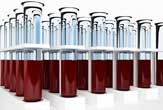Modern Miracle: Skin Transformed into Blood

Got blood? Future patients who need transfusions for surgery and cancer treatments could get it from a patch of their own skin.
Canadian researchers took the huge step of transforming adult human skin directly into blood, as detailed in the Nov. 7 issue of the journal Nature. That should provide a desperately needed new source of blood for not only surgical and cancer patients, but also for patients suffering from blood disorders such as anemia.
The new method looks far more promising than trying to convert embryonic stem cells into blood. That approach has disappointed so far because of inefficiencies in converting the stem cells into mature cell types for transplantation. In addition, that method produces embryonic blood cells that can't be transplanted into adults.
By contrast, the new shortcut pioneered by the Canadians "has the major benefit of producing adult-type l blood cells instead of fetal blood cells," said Cynthia Dunbar, head of the molecular hematopoiesis section of the U.S. National Heart, Lung and Blood Institute of the National Institutes of Health. As an outside expert, she described the latest research as a paradigm changer for creating blood cells.
Researchers also previously tried using reprogrammed adult stem cells from human skin to make blood, because they avoid the ethical concerns concerning embryonic stem cells and the immune system complications that might reject foreign biological material.
But these adult stem cells are limited in quantity. They also produce embryonic blood cells because they had to internally reset to the embryonic state to become stem cells, and so they cannot be used for transplantation into adults.
The Canadians bypassed all those problems by finding growth factors (substances that regulate cell division and survival) that could directly reprogram skin cells into blood cells. That not only bypasses the stem cell stage with all its issues, but it creates adult blood cells that can be used for transplantation into adults.
Sign up for the Live Science daily newsletter now
Get the world’s most fascinating discoveries delivered straight to your inbox.
Avoiding the stem cell stage also means that researchers can now make far larger quantities of blood cells, because they avoid the conversion inefficiency of going to and from the stem cell stage.
"We'll now go on to work on developing other types of human cell types from skin, as we already have encouraging evidence," said Mick Bhatia, a lead study author and scientific director of the Stem Cell and Cancer Research Institute at McMaster University in Canada.
Bhatia's team changed skin into blood several times over two years. They also used human skin from both young and old alike to prove that it works for any age of person.
Clinical trials could begin as soon as 2012.











